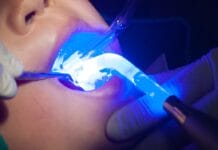Are you in need of CE credits? If so, check out our peer-reviewed, self-study CE courses here.
Test Your Microbiology Knowledge
1. Bacteria have different characteristics and activities, allowing for clear distinction from one another. For example, when using dye to stain bacteria to better see and identify them, gram-positive bacteria stain pink or red, while gram-negative bacteria stain blue or purple.
Bacteria have different characteristics and activities, which allows a clear distinction between them. These differences include size/shape, staining characteristics, colony characteristics, metabolic properties, immunological properties, and DNA characteristics. A staining procedure allows bacteria to be differentiated between two categories, gram-positive and gram-negative. Gram-positive bacteria appear purple or blue upon staining while gram-negative bacteria appear red or pink.
Miller, C.H., Palenik, C.J. (2005). Infection Control & Management of Hazardous Materials for the Dental Team (Third Edition). Elsevier Mosby.
2. Obligate aerobes can tolerate only low concentrations of oxygen at no more than 4%.
Bacteria are separated into four different groups based on their oxygen requirements.
- Obligate aerobes require the presence of oxygen at concentrations of about 20% and cannot grow at low oxygen concentrations.
- Microaerophiles can tolerate only low oxygen concentrations of oxygen at no more than 4%.
- Obligate anaerobes cannot tolerate oxygen and grow only in its absence.
- Facultative anaerobes can grow in the presence or absence of oxygen.
Miller, C.H., Palenik, C.J. (2005). Infection Control & Management of Hazardous Materials for the Dental Team (Third Edition). Elsevier Mosby.
3. Flagella are the structures that allow certain bacteria to attach to surfaces. In comparison, the cytoplasmic membrane inhibits phagocytosis allowing bacteria to escape death.
Fimbriae are the structures that allow certain bacteria to attach to surfaces. In comparison, the capsule inhibits phagocytosis allowing bacteria to escape death. The flagella of bacteria assist bacteria in movement through fluids. The cytoplasmic membrane transports nutrients, secretes waste, synthesizes DNA and the cell wall as well as provides energy metabolism for the bacteria.
Miller, C.H., Palenik, C.J. (2005). Infection Control & Management of Hazardous Materials for the Dental Team (Third Edition). Elsevier Mosby.
4. Which of the following are new emerging gram-positive anaerobic bacteria associated with the pathogenesis of periodontal disease?
“Recently, two Gram-positive anaerobic bacteria have emerged as important periodontal pathogens, Filifactor alocis , and Peptoanaerobacter stomatis. Both of these pathogens manipulate neutrophil effector functions.”
Hatfield, S. (2020, August 25). Pathogen Classifications: Where Dentistry Has Gone Since The “Complex Theory.” Today’s RDH. https://www.todaysrdh.com/pathogen-classifications-where-dentistry-has-gone-since-the-complex-theory/
5. Which of the following is an obligate intracellular parasite that depends on its host’s cell for all aspects of its reproduction?
Viruses are obligate intracellular parasites that can only reproduce within a host’s cell. Viruses spread from cell to cell via infectious particles. Viruses that cause oral diseases include herpes viruses and coxsackie viruses, among others.
Flint, J., Racaniello, V., Rall, G., Hatziioannou, T., Skalka, A. M. (2020). Principles of Virology (Fifth Edition, Vol. 1). Wiley.
Miller, C.H., Palenik, C.J. (2005). Infection Control & Management of Hazardous Materials for the Dental Team (Third Edition). Elsevier Mosby.
6. Which herpesviruses have been found in the most advanced periodontal lesions of children, adolescents, and adults?
Though multiple herpesviruses have been detected in periodontal lesions, cytomegalovirus, Epstein-Barr virus and/or dual infection with cytomegalovirus and Epstein-Barr virus can be detected in most periodontal lesions across all age groups.
Slots, J. Interactions between Herpesviruses and Bacteria in Human Periodontal Disease. In: Brogden KA, Guthmiller JM, editors. Polymicrobial Diseases. Washington (DC): ASM Press; 2002. Chapter 16. Available from: https://www.ncbi.nlm.nih.gov/books/NBK2484/
7. In addition to bacteria and viruses, protozoa have been implicated in the development and progression of periodontal disease.
Studies have indicated an increase in the prevalence of the oral parasites, E. gingivalis and T. tenax, is associated with the progression of periodontal disease, starting from a healthy state progressing through gingivitis into periodontal disease. The authors of a study published in 2021 call for further investigation into the association and the need to consider these usually commensal parasites as possibly pathogenic.
Yaseen, A., Mahafzah, A., Dababseh, D., et al. (2021). Oral Colonization by Entamoeba gingivalis and Trichomonas tenax: A PCR-Based Study in Health, Gingivitis, and Periodontitis. Frontiers in Cellular and Infection Microbiology, 11, 782805. https://doi.org/10.3389/fcimb.2021.782805












